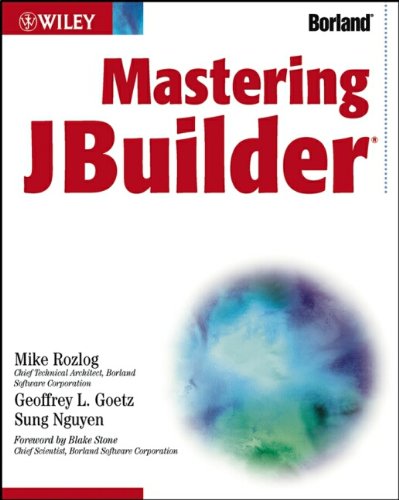買這商品的人也買了...
-
 計算機組織與設計--軟硬體界面第二版 (Computer Organization & Design, 2/e)
計算機組織與設計--軟硬體界面第二版 (Computer Organization & Design, 2/e)$680$537 -
 Data Mining: Concepts and Techniques
Data Mining: Concepts and Techniques$2,520$2,394 -
 Learning Perl, 3/e
Learning Perl, 3/e$1,350$1,283 -
 C++ 程式設計與應用
C++ 程式設計與應用$799$639 -
 $700Microsoft Visual Basic .NET Step by Step
$700Microsoft Visual Basic .NET Step by Step -
 Perl 學習手冊 (Learning Perl, 3/e)
Perl 學習手冊 (Learning Perl, 3/e)$580$458 -
 物件導向程式 Java 設計入門 (An Introduction to Object-Oriented Programming with Java, 2/e)
物件導向程式 Java 設計入門 (An Introduction to Object-Oriented Programming with Java, 2/e)$700$686 -
 Thinking in Java 中文版 (Thinking in Java, 2/e)
Thinking in Java 中文版 (Thinking in Java, 2/e)$920$727 -
 Numerical Analysis, 7/e
Numerical Analysis, 7/e$1,100$1,078 -
 演算法導論 (Introduction to Algorithms, 2/e)
演算法導論 (Introduction to Algorithms, 2/e)$860$679 -
 JavaScript 範例活用辭典
JavaScript 範例活用辭典$450$351 -
 Java 完美經典優質學習篇
Java 完美經典優質學習篇$750$638 -
 Dreamweaver MX for JSP 夢幻咖啡香
Dreamweaver MX for JSP 夢幻咖啡香$620$527 -
 Red Hat Linux 9 實務應用
Red Hat Linux 9 實務應用$650$514 -
 802.11 無線網路技術通論 (802.11 Wireless Networks: The Definitive Guide)
802.11 無線網路技術通論 (802.11 Wireless Networks: The Definitive Guide)$760$600 -
 Dreamweaver MX 互動網站百寶箱 for ASP
Dreamweaver MX 互動網站百寶箱 for ASP$580$493 -
 ASP.NET 程式設計徹底研究
ASP.NET 程式設計徹底研究$590$466 -
 Red Hat Linux 9 架站實務
Red Hat Linux 9 架站實務$620$490 -
 Embedded Linux 嵌入式系統原理與實務
Embedded Linux 嵌入式系統原理與實務$860$731 -
 Windows Server 2003 網路與 IIS 架站指南
Windows Server 2003 網路與 IIS 架站指南$680$537 -
 ARM 原理與實作─以網路 SoC 為例
ARM 原理與實作─以網路 SoC 為例$600$540 -
 STRUTS 實作手冊(Struts in Action: Building Web Applications with the Leading Java Framework)
STRUTS 實作手冊(Struts in Action: Building Web Applications with the Leading Java Framework)$690$538 -
 Java 2 教學手冊 SDK 1.4版 (Beginning Java 2 SDK 1.4 Edition)
Java 2 教學手冊 SDK 1.4版 (Beginning Java 2 SDK 1.4 Edition)$780$616 -
 重構─改善既有程式的設計
重構─改善既有程式的設計$720$569 -
 XOOPS2 網站架設與管理
XOOPS2 網站架設與管理$590$502
相關主題
商品描述
JBuilder is a tool designed by Java developers for Java developers. JBuilder developers need a guide that delves into the more powerful techniques that are required to build enterprise-strength applications.
Endorsed by Borland, Mastering JBuilder is divided into two major disciplines: the development of Java source code and the management of Java source code. You’ll learn about the technologies and frameworks that JBuilder uses to help with code development. You’ll also get insight on how JBuilder allows you to choose several different technologies and frameworks including Swing, JDBC, Servlets, Java Server Pages, Struts, EJB, RMI, and Web Services.
Including coverage of the latest release of JBuilder–JBuilder 8–the book begins with how to install and configure JBuilder on any machine. Then the authors dive in and tackle such subjects as:
- Understanding and using JBuilder’s extensive tool sets for creating, managing, and refactoring Java classes
- Integrating team testing and building frameworks to simplify large develo pment projects
- Moving from Servlets to Java Server Pages and Struts
- Developing EJB 1.1 and EJB 2.0
- Facilitating development with RMI, CORBA, and Web Services
The companion Web site includes source code and useful links for updates
Table of Contents
Foreword.
Acknowledgments.
Introduction.
Part 1: JBuilder as an Integrated Development Environment.
Chapter 1: Installing JBuilder.
Chapter 2: Customizing the AppBrowser.
Chapter 3: Controlling Java Configurations.
Chapter 4: Project Properties and Configurations.
Chapter 5: Debugging with JBuilder.
Chapter 6: Using the JBuilder Help System.
Part 2: JBuilder as a Rapid Application Development Tool.
Chapter 7: Creating Classes.
Chapter 8: Modifying Classes.
Part 3: JBuilder and Application Lifecycle Management.
Chapter 9: Integrated Team Development.
Chapter 10: Using Build Systems.
Chapter 11: Unit Testing with Junit.
Chapter 12: UML Visualization.
Part 4: Two-Tier Client/Server Development with JDBC.
Chapter 13: Building the Database with JDataStore.
Chapter 14: DataExpress and DBSwing Applications.
Part 5: Web Development with Servlets, Java Server Pages, and Struts.
Chapter 15: Server and Service Configuration.
Chapter 16: Web Enablement with Servlets.
Chapter 17: Moving from Basic Servlets to Java Server Pages.
Chapter 18: Developing with Struts.
Part 6: Enterprise Development with Enterprise JavaBeans.
Chapter 19: Developing EJB 1.1.
Chapter 20: Developing EJB 2.x.
Part 7: Distributed Computing with RMI, CORBA and Web Services.
Chapter 21: RMI Development with JBuilder.
Chapter 22: CORBA Development with JBuilder.
Chapter 23: Web Services Development with JBuilder.
Index.































